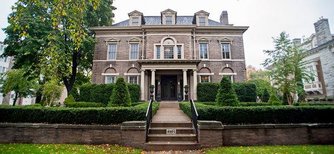Queens, the city’s most sprawling borough, has long been a landing pad for new arrivals and those looking for a cheaper alternative to Manhattan. Over the decades, newcomers from practically every corner of the world have moved in, making it the most diverse borough in New York City.
The Tilt Toward Queens
By MICHELLE HIGGINS
Published: November 1, 2013
With rents and real estate prices on the rise in Manhattan and Brooklyn, young professionals and families in particular have gradually been following the subway lines east of Manhattan and beyond Long Island City to Astoria, Jackson Heights and other traditionally working-class enclaves in northwest Queens. Close on their heels, developers have been scouting out sites to build housing.
“Brooklyn evolved from being a cheaper alternative to Manhattan and has become a focus of new development and a destination,” said Jonathan J. Miller, the president of the appraisal firm Miller Samuel. “As the search for affordability expands and as the economy and the housing market improves, you’re seeing Queens is sort of next in line.”
In Queens in the third quarter, the median sales price of $372,000 was almost even with last year’s third-quarter figure, according to a report compiled by Mr. Miller for Douglas Elliman Real Estate. Meanwhile, the median sales price in Brooklyn hit a 10-year high, rising to $564,720 in the third quarter. The price discrepancy was greater in the luxury category, where the third-quarter median was $1.7 million in Brooklyn and $889,000 in Queens.
Renters, too, have found relief in Queens. The average monthly rent there rose 5.2 percent, to $1,574, in the 12 months ending in June, according to the latest numbers available from the real estate research firm Reis Inc. But over that same period, Queens rents were still cheaper than those in Brooklyn ($1,692) and Manhattan ($3,814).
Nudged by rising land prices and a diminishing number of sites zoned for large-scale development in Manhattan and Brooklyn, major developers have been venturing into Queens.
Over the next three years, more than 8,000 apartments are planned for Long Island City and parts of Astoria, according to estimates from Aptsandlofts.com, a New York brokerage that specializes in the marketing of developments.
Earlier this year, New Jersey-based Treetop Development acquired Saxon Hall, a 417-unit doorman building in the heart of Rego Park, for $85.25 million. It has plans to upgrade the mechanical systems, add a gym and a roof deck, and modernize the lobby and any vacant units.
In June, Vornado Realty Trust received approval from the Department of Buildings for a 314-unit luxury apartment tower above its Rego Park shopping mall. And this fall, the Rockefeller Group and TDC Development and Construction are to start on an $850 million mixed-use project on five acres in downtown Flushing, with more than 600 apartments, a Y.M.C.A., stores and open space.
The catalyst for the growing interest, brokers and developers say, is the success of Long Island City, just across the East River from Manhattan, where some condos have been selling for more than $1,000 a square foot.
“Many developers we’re working with started out in Long Island City and are now moving to other areas of Queens,” said Eric Benaim, the chief executive of the Modern Spaces brokerage, which has offices in Long Island City and Astoria. “They were able to see the potential with Long Island City and are now open to doing projects in other areas.” Industry executives like to draw comparisons between the quickening pace of development in Queens and the rapid transformation of Brooklyn over the last few years. With prices skyrocketing in prime parts of Brooklyn like Cobble Hill and Williamsburg, said Michael Tortorici, a founder of Ariel Property Advisors, “now you have other areas that used to be considered second- or third-tier, like Crown Heights and Bushwick, catching up very quickly.”
In Queens, he continued, “I think you can see the market following the same pattern,” with momentum from Long Island City and Astoria carrying into Elmhurst, Flushing and beyond.
But that is where the comparisons end. Queens may be on the rise, but it lacks the buzz that has turned Brooklyn into a global brand. Still, Queens fans say that is precisely why they like it. “Queens is Queens,” said Rich Buceta, the president of SingleCut Beersmiths, a new brewery in Astoria. “It basically doesn’t have to live up to any sort of hype or image like, say, Manhattan or Brooklyn. Queens is much more low-key. It’s much more unassuming. We’re not trendy. We’re not trying to appeal to the latest fad.”
Astoria











